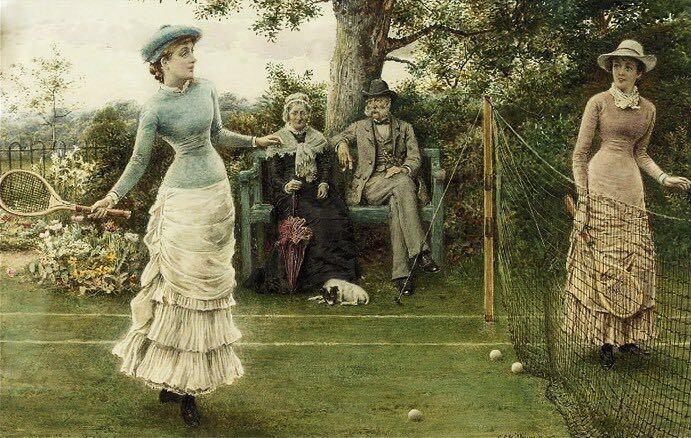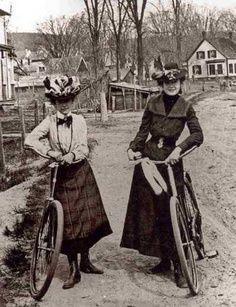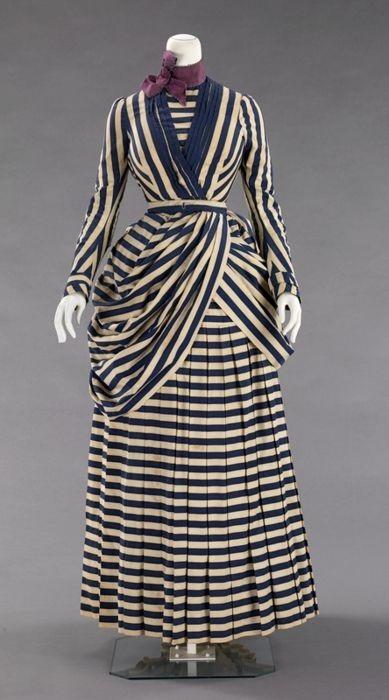
 Painting “A Play of Tennis” (1882)
Painting “A Play of Tennis” (1882)
British art in the late 1800s is called the Victorian art, which is known for its academian paintings of detailed scenes of social life. The paintings of this period included different social topics and represented different social classes. One of the artists of that period is George Goodwin Kilburne Jr. (1863 – 1938), the son of a famous British artist George Goodwin Kilburne (1839 – 1824). Their art is so similar that it is often difficult to identify which artwork belongs to father and which to son. This paper aims to analize the painting “A Play of Tennis” by George Goodwin Kilburne Jr. as an example of detailed reflection of its contemporary preferences in fashion and leasure activities. The painting demonstrates two wemen posing while playing tennis in the yard. Their clothes are accurately pointed out by the author, as well as their surroundings. The paper gives detailed analysis of their clothing in accordance to the provided period and social conditions.
George Goodwin Kilburne senior, the painter’s father and a famous artist himself, came from an old noble family of Goodwin Kilburne. He was born in Norfolk and was the eldest son among other two children. He got his education at Hawkhurst, Kent, where his father studied, as well. At the age of 15, Kilburne moved to London, where he used to work as a wood engraver and illustrator with Danziel brothers. This event defined his early preferences in art, as he was highly appreciated by his employers. Kilburne had worked with wood for a long time before he started experiencing pencil, oil and water colors. Engravements taught him accuracy and high quality detalization within his further works.
Danziel brothers became his patrons not only in professional field. Their family was quite big: Thomas and Edward Danziel had a brother Robert, whose daughter Janet soon became Kilburne’s wife – in June 1862. Robert Danziel himself was also a well-known painter. The surrounding and conditions of life defined the conceptual preferences of George’s paintings – upper-class fashionable women in the elaborate stylish interiors. He was best known for his postcards and water color paintings, and later, - graphic prints. What is important to mention about Kilburne the senior is that he was known for his passion for hunting and sports. So, it is obvious that his eldest son George Goodwin Kilburne Jr. took this preferences of his father as the narratives of his paintings.
George Goodwin Kilburne Jr. was the eldest son in the family of five children. The family was upper-class, as far as they came from an ancient family on one hand and represented highly valued professions on the other hand. George Juniour was well known for his paintings that represented animals, especially hunting dogs, and sport activities (racing, tennis). His famous works are “A Tiger Hunting”(oil on card), “Awaiting the Return of the Fleet” (water color), “Expectation” (water color), “A Game of Tennis” (pencil and water color), “A Lion Guarding His Den” (oil on canvas), “An Advance” (water color).

"Game of Tennis" (pencil and water color)
According to the plots of paintings, the viewer can figure out that the main topics are hunting and sport. However, the significance of the painting “Awaiting the Return of the Fleet” differs from other images. It portrays a lonely female figure dressed in white sitting on the old boat at the coastline. The feel of this picture is sentimentally romantic and provides an allusion to Assole waiting for the scarlet sails from the Alexander Grin’s novel. Literature motifs are not Kilburne’s feature of art, but the mentioned painting represents a typical literature motif. At the same time, in a more gloal understanding, the motif of expecting was popular for many European art pieces of those times. It was an uncoscious prediction of changes that the twentieth century would bring. However, the expectation of this woman is not anxious, the surrounding is quite calm and her posture is rather languishing than foreseeing. She is portrayed in an idealistic manner because of her white gown reflecting the daylight, which expresses her innosence. The background landscape is introduced in an impressionist manner, which is different from other paintings of Kilburne Jr., and moreover, from his father. Both tend to be accurate in details, even if it is nature, but “Awaiting the Return of the Fleet” demonstrates oscitant light strokes of the trees and hills. At the same time, clothes of the woman are more detailed, as featuring other paintings of the author. Colors are also calm with a little contrast of lights and shadows.
The painting which is mentioned above is not a typical one for George Goodwin Kilburne Jr., and can be seen as an example of differentiation his work from his father’s paintings based on the observing of early Modernist movement influences on the late Victorian art. Despite that, general style of Kilburne Jr. is Victorian. In his works, it is possible to notice combinations of realistic social scenes with romantic idealization and even exaggeration of wealth. Some of his works contain over-detalization peculiar for Roccoco art. The colors are usually light, but always complex, which is significant for classical academian school. There are no open vivid colors, but all of them are represented through ochre or umbra tones. His oil paintings are not so elaborate in strokes, but his watercolor and pencil drawings are impressively detalized, which is quite difficult to achieve using these materials. In this case, Kilburne Jr.’s father’s influence is seen in the engraving accuracy manner of soft materials usage. The use of stroke usually depends on the use of materials, as it was mentioned above, however it is important to add that all the paintings tend to have mild strokes which repeat the realistic nature of animals and human figures. However, this peculiarity directs to the lack of dynamicity of the pictures narrative. It becomes contraversial, that sensebly dynamic pictures, such as “A Game of Tennis” seem to be static and figures are not playing, but rather posing for the author who pays more attention to the outer details, such as clothing and accessories.
“A Game of Tennis” was painted in 1882. It portrays two young women playing tennis in the yard. The yard is pursued in a realistic Victorian manner. It shows a fence, trees and bushes with flowers in the background, both accuratly stroked with soft smooth transitions of light and shadows. In the foreground, there is a net and small tennis court, where the action is set. The net and the court grass are rigourously delineated. The yard is typical for the detached houses back yards of those times.
Another item at this picture is a dog at its masters’ feet. Compositionally, it creates a balance of light and dark spots of the painting. It is portrayed on the dark background of the old lady’s gown and contrasts to it supporting other light colours. Symbollically, the dog is a sign of upper-class origin of the imaged people. It is a young dog, so its youth is even a bigger contrast to the lady in black and more suppurtive in terms of depicting women in the foreground.
The portrayed people in the painting are a typical English middle- or upper-class family. On the other hand, there is a fact that Kilburne Seniour had 5 children, two of which were girls – Florence Amy and Mary Maud. At the moment of painting they were seventeen and fifteen years old. So, the painting could be a scene of author’s family life in Hawkhurst House, 39 Steeles Road, Haverstock Hill, Hampstead in London. On the bench, behind the girls, there could be his father, and his mother. She died the same year as the painting was delivered, so this could be the last portrait of her. As it was mentioned earlier, Kilburne Jr. was famous for painting animals, and this dog could be their family’s dog. Although the dog is small, it is one of the hunting breeds, while his father was a keen hunter; so, the most possible assumption is that the painting “A Game of Tennis” portrays Kilburne’s family at the back yard of their house.
The woman on the left, which is the most likely to be George’s seventeen-year-old sister Florence Amy, is wearing an ultra-fashionable sport garment. It was a typical tennis dress in 1880s. Her undergarment is a white satin dress with filigree in the area of collar, sleeves and skirts ruching edges. The texture of the undergarment is light and even transparent, but it has many layers of cloth. The outer garment is a bluish stretch jumper that highlights the area of woman’s slim waist. Among the accessories, there is only a beret of the same color with her jumper, which is supposed to protect her face from the sun and supports the outlook at the same time. Florence’s hairstyle is also typical for sport activities – the hair is gathered into a bunch not to destract her from playing.
The lady on the right is wearing similar clothes, but her outlook looks a bit heavier than her partner’s dress. The color is pink, undergarment has a different and not so light texture, more ruchings and laces in the collar area; however this could be a neckerchief. Her outer garment is longer – it covers her knees and with the warm color it adds a heavier look to the whole image. Despite that, her summer sundown hat balances the look, making it lighter.
In the late nineteenth century, women’s fashion started changing with a blistering speed. Everyday and special occasion looks were enriched with the fashion of specific activities looks, such as tennis, horseriding, bathing and roller-skating. The main influence on the English fashion was provided by French fashion. Paris at those times was a cradle of European cultural life and it dictated fashion starting from art movements and ending eith the way of social behavior. Many Parisian artists start depicting women in the way that differed from the Rennaissanse, Romantic and other classical principles. It was Edouard Manet who became the first to show the social tendencies of emancipation. His Impressionist paintings include simple women with no exaggeration. At the same time, he was the first to show a woman with make-up. Claudes Monnet and August Renoir presented fashionable women in their up-to-date dresses, which had lighter texture and brighter colors.
The main feature of the 1880s Western fashion was the return of the bustle to be contrasted with the corseted waist and gradually widening shoulders. It was obligatory for ladies and women to wear gloves with the sleeveless qowns with the low neck, often supported by the tight necklaces – the fashion brought in by Alexandra the Princess of Wales. This fashion also influenced everyday dresses, that used to be designed with the rich bustling collars. The end of the nineteenth century also was the first time stripped dresses were fashionable. Also, women started wearing specific undergarment, known as combinations. They were made of wool and were recommended to wear especially during exercising and sport activities.
Despite the changes of fashion in Paris, British upper-class female society, especially those women in age, remained loyal to the “tea gowns”, made up without stripes, frowns, ruchings and other features of a bustle skirt. Instead of corsets, women had loosely fitted gowns with the belts on the waist. This was called an “aesthetic dress”, one of which the old lady in Kilburne’s picture is wearing.
Hairstyle was featured by the hair, tightly pulled back and worn in a low knot of bunch of curles. It was fashionable to wear hats, but without the ribbons.
Appering femminist movements led to designing more comfortable clothes for women and those that accorded with their needs in different activities. Britain was one of the first countries that started specialisation on manufacturing of women’a sport garments. This event refers to John Redfern who in 1870s began designing clothes for women who did sports, such as archery, tennis, horse riding, yachting and cycling. Very soon, the idea of sportswear for women became popular and increased to Continental Europe and the USA in the 1910s, becoming top popular in 1920s.
From the point of view of a contemporary woman, these clothes could barely be comfortable. Even though, for those times, it was a breakthrough. Compared to everyday clothes, dinner dresses, so called sports wear was much more convenient to do sport activities and everyday work.

Cycling ensembles, 1886.

Tennis garment, 1883.
As it was mentioned earlier, woolen undergarment – combinations, were good for health and were especially worn during sport activities. They were much more comfortable, as well as the loose skirts of garments to play sports on the contrast to tight dresses with heavy textile of the 1850s. Sports wear was usually a privilege of upper- and middle-class women who could afford themselves leasure activities. However, later, the principles of sports wear design spread onto the everyday fashion and were used to create clothes for working women, and much later played significant role in famous designers’ career, such as Coco Channel.
First sports wear was osmething different from contemporary understanding of one. For instance, bathing costume was something similar to contemporary spring suit or pyjamas. In those times, the appreciation of woman’s body was different, so the costumes reflected it. A bit later, in 1890s the first bicycle costumes were created as a transformation from men’s costumes. Women started wearing loose pants, which were more skirt-like and jackets or even waistcoats. Similar costumes appeared for racing and archery activities. Each kind of sport was characterized by its ypical kind of clothes.
Talking about men’s sportswear at those times, it was much more comfortable. The design of men’s wear was directed onto the functionality rather than on to beauty. Men’s sports wear was represented by tweed or woolen breeches, shirt and a Norfolk jacket without waistcoat. In addition, the shirt could have short sleeves. According to the kind of sport, the clothing could vary in design and accessories.
Everyday man’s look consisted of three main items – long trousers, sack coat and waistcoat. Morning formal suit was a cutaway coat and an ascot tie. It could be performed by beige or brown colours. Evening men’s dress was had to be in dark colors. It consisted of a tail coat, trousers and a bow tie. What is interesting, the aforehead mentioned fashion on covering the neck was spread even on men’s wear. In the middle 1880s, it became popular to wear neck shawls and neckerchieves or satin collars with several buttons with the dinner dress.
The accessories were different according to the class, for example, upper-class men wore top hats and middle-class men were seen dressed in bowlers. Also, they could wear flat hats for yachting and other sports. In 1880 pointed high-heeled shoes were fashionable as among men, as well among women.
The old man in Kilburne’s picture is the most likely to be wearing a dinner dress of greyish beige colors. He has got a bowler hat, so he represents either a middle class, or upper-class, but the one who has no special or formal occasion except for relaxing in his yard.
In conclusion, George Goodwin Kilburne Jr. was one of the best water color painters in late nineteenth century. Kilburne’s art pieces are accurate, with light color transitions and flexible soft lines and strokes. His works are very similar to his father’s works, but they have a hint of modernist influences. The topics of his paintings are social scenes of British upper- and middle-class families. Moreover, these scenes were quite specific and narrowed up to the motifs of hunting and sport activities. The style of his painting is influenced by his fathers’ engravement style, French Modernism, Roccocco, British classical Romantism and Sentimentalism. All these items mix up into the specific Kilburne’s style within the Victorian art.
George Goodwin Kilburne Jr.’s art work “A Play of Tennis” is a bright example of Victorian art. It provides a detailed observation of landscape, clothes and fashion. The picture itself lacks feeling and dynamicity, because women are not playing tennis. It is quite difficult to play being in the positions, which are demonstrated on the picture, so there is the conclusion, that they are posing for the artist to be captured in a perfect position of their bodies. The painting’s narrative is focused on the external details of clothes and accessories, but not the women’s and man’s feelings or emotion. Viewers are not able to understand what is the mood of all the people, because even dog is represented as an object of wealth.
The most likely is the fact that the picture shows Kilburne’s family in 1882. According to the studies of fashion and clothes preferences, the family is between middle and upper class, which fits the authors family.

